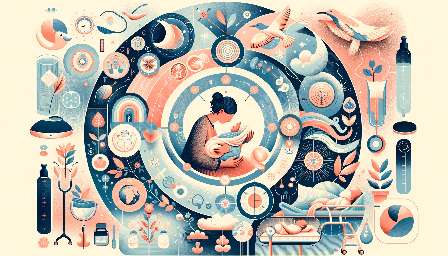Childbirth is a miraculous event that involves a complex interplay of physiological processes. The process of labor and delivery is a natural, yet intricate, phenomenon that requires the coordinated efforts of the mother's body to bring a new life into the world. Understanding the physiology of labor and delivery is crucial for expectant parents and healthcare professionals alike. Let's delve into the fascinating topic of the physiology of labor and delivery to gain insights into the amazing journey of childbirth.
Stages of Labor
Labor and delivery are typically divided into three distinct stages: the first stage, the second stage, and the third stage. Each stage is characterized by unique physiological changes and plays a crucial role in the process of childbirth.
First Stage of Labor
The first stage of labor is the longest phase and is further divided into the early phase, active phase, and transition phase. During this stage, the cervix undergoes effacement and dilation, allowing the baby to pass through the birth canal. Hormonal changes, such as increased oxytocin levels, contribute to the rhythmic contractions of the uterus, leading to cervical changes and the descent of the baby.
- Early Phase: Contractions begin, and the cervix begins to efface and dilate.
- Active Phase: Contractions become more intense and regular, leading to further cervical dilation and descent of the baby.
- Transition Phase: The cervix reaches full dilation, preparing for the onset of the second stage of labor.
Second Stage of Labor
The second stage of labor commences with full cervical dilation and involves the actual delivery of the baby. The expulsive efforts of the mother, coupled with the contractions of the uterus, propel the baby through the birth canal. The physiological process of fetal descent and rotation within the maternal pelvis is a remarkable feat orchestrated by the mother's body.
Third Stage of Labor
The third stage of labor involves the delivery of the placenta. Uterine contractions continue to aid in the detachment and expulsion of the placenta, marking the completion of the labor and delivery process.
Physiological Mechanisms
Several key physiological mechanisms play pivotal roles in the process of labor and delivery. These mechanisms include hormonal changes, uterine contractions, cervical changes, and the expulsion of the placenta.
Hormonal Changes
Oxytocin, often referred to as the 'love hormone,' is instrumental in initiating and sustaining uterine contractions. It plays a central role in promoting cervical dilation and the descent of the baby. Additionally, the surge of endorphins during labor serves as a natural pain management mechanism while facilitating the bonding between the mother and the baby.
Uterine Contractions
The rhythmic contractions of the uterus are fundamental to the process of labor and delivery. These contractions are responsible for effacing and dilating the cervix, as well as propelling the baby through the birth canal during the second stage of labor. The coordinated interplay of uterine contractions is essential for the safe delivery of the baby.
Cervical Changes
The cervix undergoes remarkable changes during the first stage of labor, culminating in full dilation to accommodate the passage of the baby. The process of effacement and dilation is regulated by hormonal and mechanical factors, marking the progressive opening of the cervix in preparation for childbirth.
Placental Expulsion
Following the birth of the baby, the placenta separates from the uterine wall and is expelled during the third stage of labor. Uterine contractions aid in the detachment and delivery of the placenta, signifying the completion of the labor process.
Childbirth
Childbirth is a deeply personal and transformative experience that involves a profound interplay of physiological, emotional, and psychological factors. Understanding the physiology of labor and delivery provides a holistic perspective on the remarkable journey of childbirth, allowing individuals to appreciate the awe-inspiring capabilities of the human body.
From the stages of labor to the intricate physiological mechanisms at play, the process of labor and delivery embodies the essence of resilience, strength, and the inherent miracle of life.


